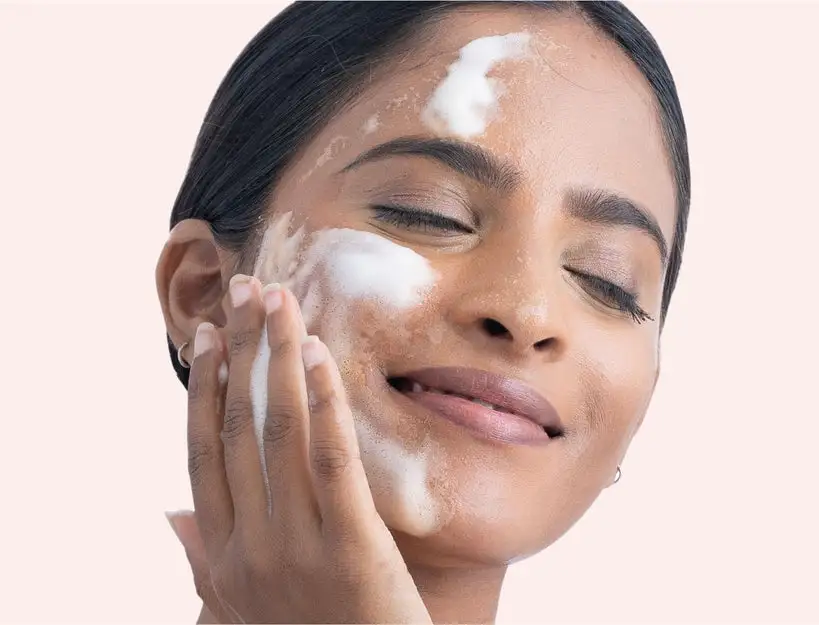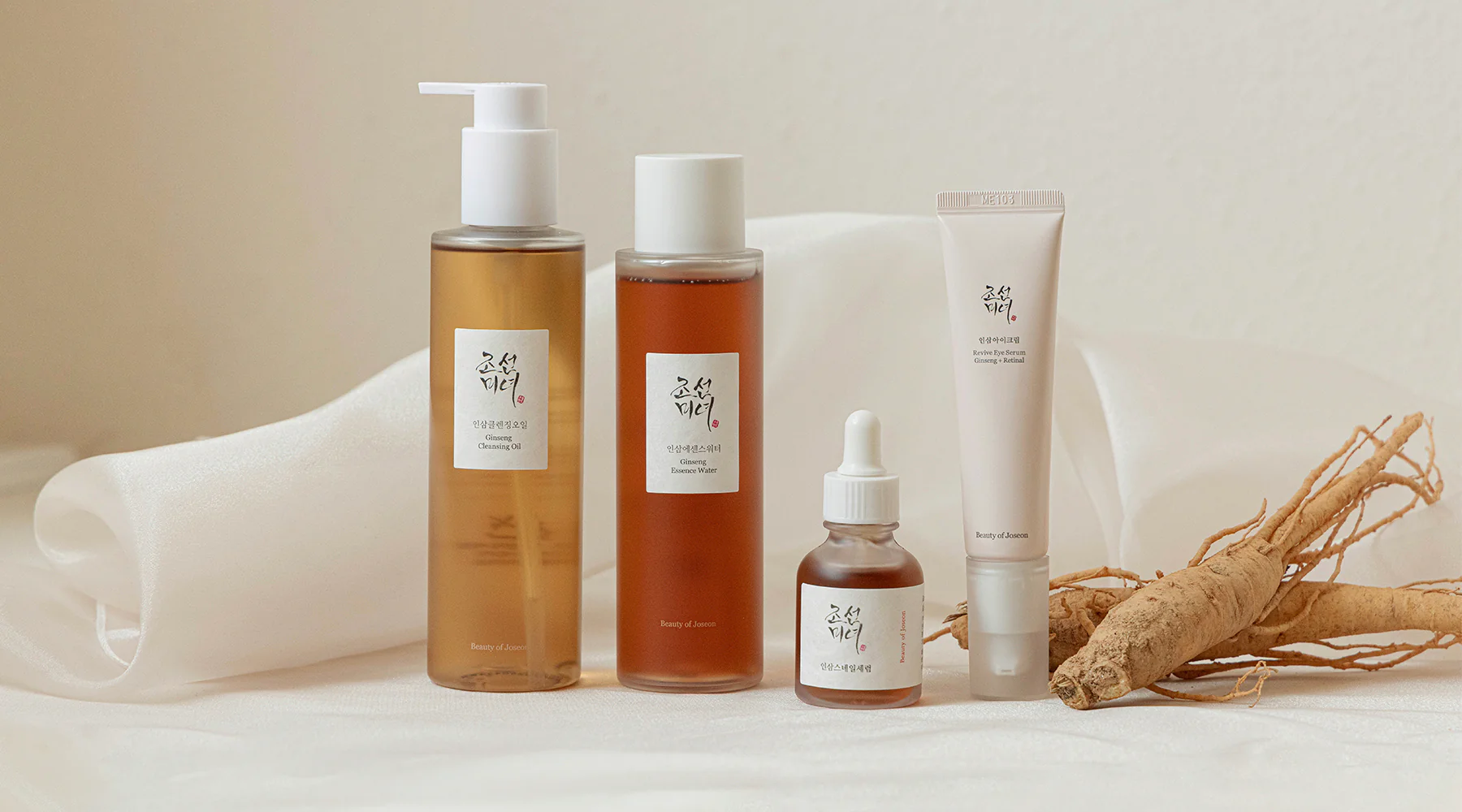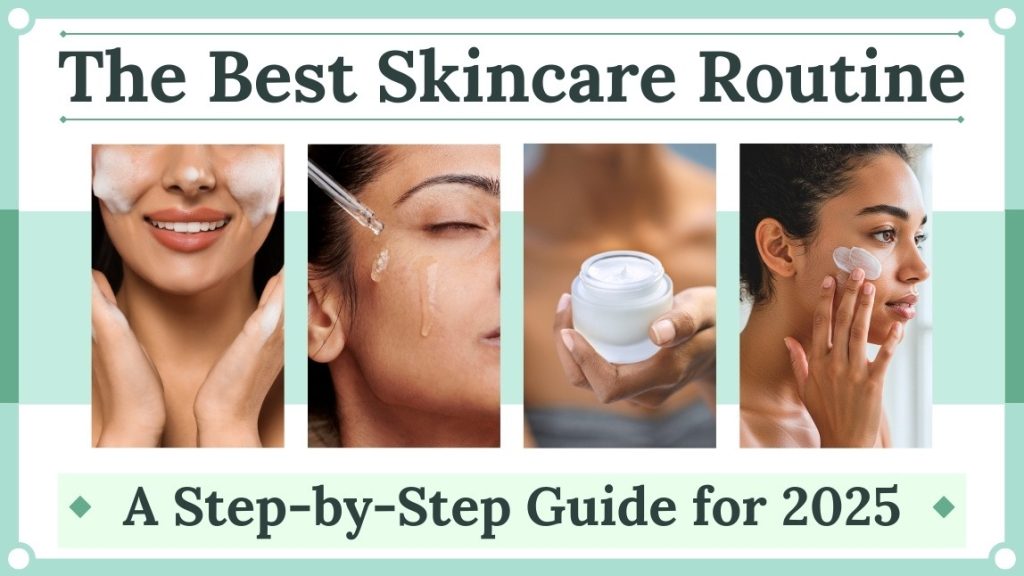A great skin care routine is the foundation of healthy, radiant skin. Whether you’re new to skin care or looking to upgrade your regimen, this guide covers every step—from cleansing to SPF—so you can build a routine that works for your skin type and concerns. Following these tips for healthy skin is your first step. With expert advice and product recommendations, you’ll be on your way to a glowing complexion in no time.
What Is a Skin Care Routine?
At its heart, a skin care routine is a consistent practice of caring for your skin to keep it healthy. Think of it less as a chore and more as a daily ritual that pays off in the long run. The goal isn’t perfection, but progress. Consistency is what truly transforms your skin.
Your skin is unique, so your routine should be, too. While the products might change, the core philosophy remains the same. Every effective routine is built on three essential pillars:
- Cleanser: To wash away dirt, oil, and impurities.
- Moisturizer: To hydrate and protect the skin barrier.
- Sunscreen: To shield your skin from damaging UV rays.

Morning Skin Care Routine
Your morning routine is all about protection and preservation. It prepares your skin for the day ahead, shielding it from sun, pollution, and other environmental stressors.
1. Cleanser
Start by washing your face with a gentle cleanser. This removes any sweat or oil that built up overnight and creates a clean canvas for your other products.
2. Toner
A toner is a fast-absorbing liquid that helps balance your skin’s pH after cleansing. It’s no longer the harsh, alcohol-based formula from the past. Today’s toners are packed with hydrating and soothing ingredients.
3. Serum
This is the treatment step. Serums are concentrated formulas that target specific concerns. For mornings, a Vitamin C serum is a great choice. It’s a powerful antioxidant that protects your skin from damage and helps brighten your complexion over time.
4. Eye Cream
The skin around your eyes is thinner and more delicate. An eye cream provides targeted hydration and can help with concerns like puffiness or dark circles. Gently tap it in using your ring finger.
5. Moisturizer
Next, lock in all that goodness with a moisturizer. This step hydrates your skin and supports its natural barrier, which is crucial for keeping moisture in and irritants out.
6. Sunscreen
This is the most important step in any skin care routine. Every single day. Rain or shine. Apply a broad-spectrum sunscreen with at least SPF 30 to protect your skin from UV damage, which is the leading cause of premature aging.
Night Skin Care Routine
Your skin switches into repair mode at night, so your evening routine should focus on cleansing and treating. This is your chance to address specific issues and give your skin the nutrients it needs to regenerate. It’s the perfect time to build a dedicated nighttime skincare routine.

1. Double Cleanse
If you wear makeup or heavy sunscreen, a double cleanse is a must. Start with an oil-based cleanser to break down makeup and SPF. Follow up with your regular water-based cleanser to wash everything away.
2. Toner
A quick swipe of toner will remove any last traces of impurities and prep your skin for the next steps.
3. Treatment (Serums or Actives)
Night is the ideal time for active ingredients like retinol, AHAs, or BHAs. These ingredients can make your skin more sensitive to the sun, so using them before bed is safer. Don’t use them all at once! Alternate nights to avoid irritation.
4. Eye Cream
Apply your eye cream again to nourish the delicate under-eye area while you sleep.
5. Moisturizer
A night cream or a richer moisturizer helps restore hydration and supports your skin’s recovery process overnight.
6. Face Oil (Optional)
If your skin is on the drier side, you can press a few drops of face oil over your moisturizer. This acts as a sealant, locking in moisture and giving you an extra glow.
Weekly Skin Care Steps
Think of these as weekly boosters to supplement your daily routine.
- Exfoliation: Once or twice a week, use an exfoliant to remove dead skin cells. This can be a physical scrub or a chemical exfoliant (like a glycolic acid toner). It helps with skin texture and allows your other products to absorb better.
- Mask: A weekly face mask is a nice way to relax and give your skin a concentrated dose of ingredients. Choose one based on your current skin needs—hydrating, clarifying, or brightening.
- Facial Massage: While applying your products, take a minute to gently massage your face. This can help boost circulation and reduce puffiness. It also feels amazing.
How to Choose Products for Your Skin Type?
The secret to a successful routine is using products formulated for your skin. Not sure what your type is? Here’s a quick guide.

- Dry Skin: Your skin feels tight and may be flaky. Look for hydrating heroes like hyaluronic acid and ceramides. A gentle, creamy cleanser and a rich moisturizer are your best friends. Check out our guide to building a skincare routine for dry skin.
- Oily Skin: Your skin looks shiny and you might be prone to breakouts. Opt for oil-free, non-comedogenic products. Gels and lightweight lotions work well. Following a consistent skincare routine for oily skin can help manage shine.
- Combination Skin: You’re oily in the T-zone (forehead, nose, chin) and dry elsewhere. The key is balance. You might need to use different products on different areas. A good skincare routine for combination skin will help you find that happy medium.
- Sensitive Skin: Your skin is easily irritated. Avoid products with fragrance, alcohol, and other common irritants. Look for soothing ingredients like niacinamide or cica.
- Acne-Prone Skin: You experience frequent breakouts. Ingredients like salicylic acid and benzoyl peroxide can be very effective. Just be sure not to overdo it and dry out your skin.
Layering Skin Care Products: The Right Order
Why does order matter? Because some products need to absorb fully to work, while others are designed to sit on top of the skin. Applying them incorrectly can make them less effective.
The golden rule is to apply products from thinnest to thickest consistency.
- Cleanser
- Toner / Essence
- Serum
- Eye Cream
- Moisturizer
- Face Oil
- Sunscreen (in the morning)
The only major exception is sunscreen, which should always be your last step in the morning to create a protective shield.
Common Skin Care Mistakes to Avoid
We’ve all been there. Here are a few common slip-ups to watch out for:

- Over-cleansing or over-exfoliating: More is not always better. Stripping your skin of its natural oils can damage your skin barrier and lead to more problems.
- Skipping sunscreen: This is non-negotiable. It’s the best anti-aging product you can use.
- Using too many active ingredients at once: Piling on retinol, vitamin C, and acids can lead to major irritation. Introduce them slowly and use them on alternate days.
- Not patch testing: Always test a new product on a small area of skin (like behind your ear) to see how it reacts before applying it all over your face.
Top Skin Care Ingredients to Know
Navigating ingredient lists can feel like a chemistry class. Here are five power players to look for:
- Hyaluronic Acid: A moisture magnet that can hold up to 1,000 times its weight in water. It’s fantastic for hydrating all skin types.
- Niacinamide: A form of vitamin B3 that can help brighten skin, calm redness, and reduce the appearance of pores.
- Vitamin C: A potent antioxidant that protects skin from environmental damage and helps fade dark spots.
- Retinol: A derivative of vitamin A that encourages cell turnover. It’s a gold-standard ingredient for addressing signs of aging and acne.
- Peptides: Chains of amino acids that are the building blocks of proteins like collagen. They help support skin elasticity and firmness.
Your skin’s health is also influenced by factors beyond products, including your diet, how much water you drink, your sleep quality, and your stress levels. A holistic approach always yields the best results.
Building a skin care routine is a marathon, not a sprint. Be patient, stay consistent, and listen to your skin.

For more wellness and self-care insights, feel free to explore more of our content here at www.notonetype.org.
Frequently Asked Questions (FAQs)
What is the best skin care routine for beginners?
The best routine is a simple one. Start with the three essentials: a gentle cleanser, a moisturizer, and a broad-spectrum sunscreen (SPF 30+). Use them every morning. At night, just cleanse and moisturize. This is also a great starting point for a skin routine for teens.
How often should I exfoliate?
For most skin types, exfoliating 1-2 times per week is plenty. Over-exfoliating can lead to irritation and damage your skin barrier. If you have sensitive skin, once a week or even less may be enough.
Can I use retinol every day?
It depends on your skin’s tolerance and the product’s strength. Start by using retinol 1-2 times a week and slowly build up as your skin gets used to it. Some people can eventually use it daily, while others find that every other day works best.
What’s the difference between a serum and a moisturizer?
A serum has smaller molecules and is designed to deliver a high concentration of active ingredients deep into the skin to target specific concerns like wrinkles or dark spots. A moisturizer has larger molecules and its main job is to hydrate the skin and create a protective barrier on the surface.
Do I need a toner in my routine?
A toner is not strictly necessary, but it can be a beneficial step. Modern toners can provide extra hydration, help balance the skin’s pH, and prepare the skin to better absorb the products that follow.
How do I choose the right sunscreen?
Look for a “broad-spectrum” sunscreen with an SPF of 30 or higher. This protects against both UVA (aging) and UVB (burning) rays. The best sunscreen is one you’ll enjoy wearing every day, whether it’s a chemical or mineral formula.
What are the best products for sensitive skin?
For sensitive skin, choose products that are free of fragrance, alcohol, and common irritants. Look for formulas with soothing ingredients like niacinamide, ceramides, or centella asiatica (cica). Always patch-test new products before use.


You may also like this
Complete Guide to Building a Skincare Routine for Dry Skin
Dealing with dry skin can feel like a constant battle. That tight, uncomfortable feeling, the...
Nov
Skin Routine for Teens: A Simple Guide to Healthy Skin
Developing a simple, effective skin routine for teens is one of the best things you...
Nov
Balanced Skincare Routine for Combination Skin
Finding the right skin care routine for combination skin means balancing oily zones with dry...
Nov
Best Nighttime Skincare Routine for Oily Skin in 2025
If you have oily skin, the end of the day might feel like a race...
Nov
Skincare for Over 40s: Best Routines, Products & Ingredients for Radiant Mature Skin
Hello, lovely people! Let’s talk about something that feels like it happened overnight: waking up...
Nov
Easy Tips for Healthy Skin Everyone Should Follow
Healthy skin really starts with the small things we do every day. It’s about the...
Nov